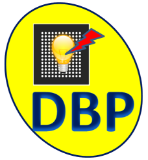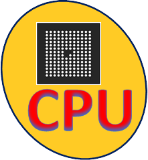What is "Memorism"?
Memorism Processors are processors that takes over “processing that requires data detection”, which conventional processors such as CPU and GPU struggle with.The division of tasks between conventional processors and Memorism Processors enables a “renewal of computers that literally modernizes the information processing industry”, transforming them into user and environmentally friendly computers.
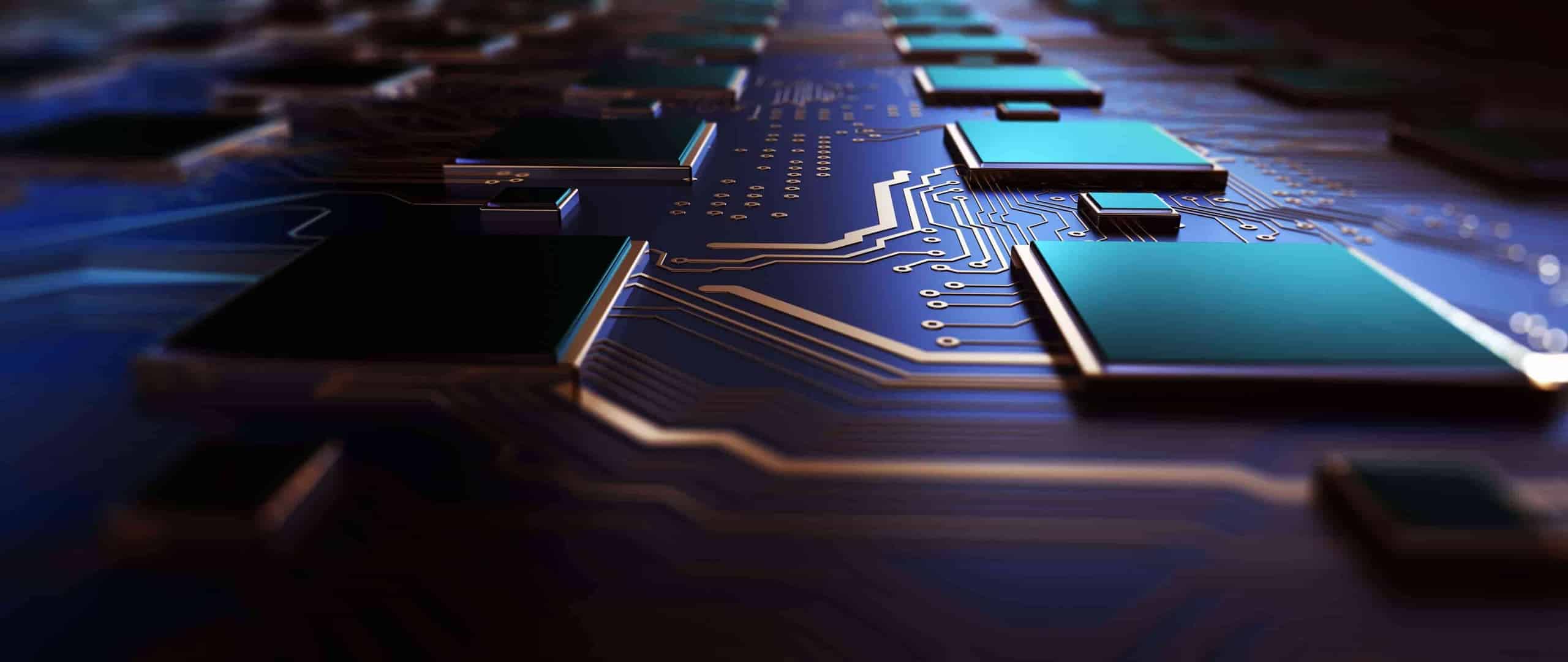
Current and future information processing
Current information processing
Since current computers (von Neumann-type computers) were born in 1946, CPUs, memory, and peripherals have undergone major performance improvements, but the systems have not evolved at all. This generated the following problems that we have today:
| Common sense thus far | Problems | |
|---|---|---|
| CPU/GPU | The only way to upgrade their performance is by adding more cores and through 3D technology. | Under this condition, no significant reduction in power consumption can be expected. |
| Server | The performance can be improved any amount by adding more servers. | It comes at the expense of high installation costs, power consumption, and air conditioning. |
| Algorithm | Processes that require data detection can be solved with various algorithms. | It comes at the expense of real-time performance, and the update process is a large burden. |
| Deep learning | AI can be realized with machine learning. | It requires solving learning method, power, and black box problems. |
Future information processing society
In the future, the information processing industry will not only need to adapt to a low-carbon society, but also make good use of technologies such as AI, IoT, and Big Data. As the semiconductor miniaturization technology known by Moore’s law approaches its limit, enhancing the performance of CPUs and GPUs will become increasingly more difficult and will require innovations that are not tied to past common sense ideas and values concerning information processing.




The fate of current computers
Bottleneck
Current computing is based on processing of CPU/GPU and memory. The CPU is known for its capacity to process all types of data processing, while the GPU is good at arithmetic operations, but the bottleneck in the data exchange between the CPU/GPU and memory has become problematic.
Since processes with “data detection” are heavily affected by the bus bottleneck, it is necessary to rely on pre-processes, such as the creation of an index. However, this pre-processing involves the optimization of complex algorithms, which can only be conducted by a specialist.
These factors make information processing inefficient, which slows down the evolution of IoT and AI.


Understanding the bottleneck
In current computers, the performance of processes with data detection, such as search, collation, recognition, and authentication, has fallen significantly behind that of OS processing, arithmetic operation processing, control processing, and communication processing.
Despite being used very frequently, these processes with data detection have many needs that have not been addressed.
In our company, we call this problem the “Data Detection Problem” or “Information Detection Problem”.

Memorism Processors
Three types and six kinds of Memorism Processors
The “Memorism Processors” were developed to solve the current “Data (Information) Detection Problem.”
It is a processor that takes over the processes with data detection, which the CPU and GPU are both bad (inefficient) at.
All Memorism Processors below are many thousands of times faster in the tasks that CPUs struggle with.
SOP
Set Operating Processor
A processor specialized in detecting the desired pattern from images and texts. It comes in three versions: 1D-SOP, 2D-SOP, and 3D-SOP.
Use example: Specific object recognition, general object recognition, flaw detection, abnormality detection, text mining, 3D matching, and others.

DBP
DataBase Processor
A processor specialized in searching or collating the desired data record from big data. It comes in two versions kinds : S-DBP and B-DBP.
Use example: General database, RDBMS, full-text search, AI, and others.

XOP
Cross Operating Processor
A processor specialized in the comparison between data.
Use example: Classification, sorting, histogram, AI, and others.

Processor comparison
|
|
|
|
|
|
|
| Information processing method | Serial processing | Serial and parallel processing | Group batch processing | Group batch processing | Group batch processing |
|---|---|---|---|---|---|
| No. of parallel connections | ~72 | ~5K | ~2M | ~a few M | ~a few M |
| Degree of parallelism | Low | Medium | High | High | High |
| Power consumption | 4W – 260W | 30W – 500W | About 1W | About 1W | A few W |
| General operation | ◎ | △ | – | – | – |
| Arithmetic operation | ○ | ◎ | – | – | – |
| Deep learning | ○ | ◎ | Equivalent processing is possible through combination | – | |
| Pattern matching | △ | ○ | ◎ | – | – |
| Extraction of features | △ | ○ | ◎ | – | – |
| Recognition | △ | ○ | ◎ | – | – |
| Search | △ | △ | – | ◎ | – |
| Collation | △ | △ | – | ◎ | ○ |
| Classification | △ | △ | – | ○ | ◎ |
| Sorting | △ | △ | – | ○ | ◎ |
◎:Very good at; ○:Good at; △:Not good at; −:Not applicable
CPU:Intel、GPU:Nvidea
May, 2020
Examples of the application of Memorism Processors
| Classification | Examples of information data | Examples of information processing that Memorism Processors can speed up, make more efficient and energy-saving, and also simplify and standardize |
Suitable Memorism Processor*1 | |||||
| 1D-SOP | 2D-SOP | 3D-SOP | S-DBP | B-DBP | XOP | |||
| Information Processing Method | General data Customers/Procurement Inventory/Human Resources Accounting/Wages Production/Inspection/POS |
Search/Collation/Ranking | ○ | |||||
| Data/Classification/Sorting | ○ | |||||||
| Infrastructure system information data |
GPS data | Number of cars or people by area | ○ | |||||
| Personal ID data | Search/Collation/Ranking | ○ | ||||||
| Inverted index data for full-text search | Search/Collation/Ranking | ○ | ○ | |||||
| Web data | Semantic web search | ○ | ○ | ○ | ○ | ○ | ||
| Character (text) data | Password detection Password histogram |
○ | ||||||
| Time-series data such as stock prices and weather forecasts |
Similar pattern mining | ○ | ○ | |||||
| DNA data | Similar pattern mining | ○ | ||||||
| Image system information data |
FA systems Robots/FA/equipment/Inspection equipment |
Flaw and abnormality detection/Picking/Handling Tracking/Positioning |
○ | |||||
| Autonomous operation systems Cars/Drones/Humanoid robots |
Understanding the scene Current position recognition Collision detection Autonomous operation |
○ | ||||||
| Security systems | Face recognition/Authentication/Object detection/Malware detection | ○ | ||||||
| Others | Medical image data analysis Weather forecast data analysis Game data analysis Similar image detection |
○ | ||||||
| Other information data |
Voice data | Text search/Voice translation | ○ | |||||
| Video (image) data | Video editing tools Similar image detection (illegal copies) Automatic frame annotation |
○ | ||||||
| 3D map data | Autonomous driving navigation | ○ | ||||||
| Molecular structure data | Molecular structure analysis for pharmaceuticals |
○ | ||||||
*1:Only the main Memorism Processors are listed
Information processing by Memorism Processors
Memorism Processors break away from conventional computing methods. The desired results can be obtained by only inputting the “Query Operation Conditions”.
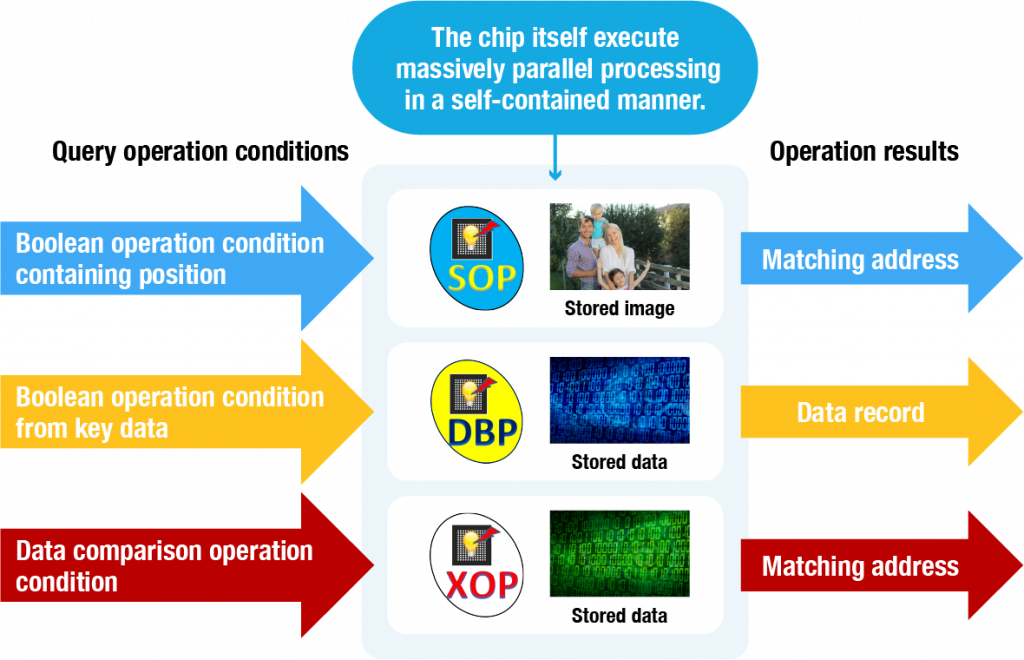
Methods of AI (Artificial Intelligence)
Method of pattern recognition
Pattern recognition is the basic concept of AI.
It is classified into two large groups.
One of them is the recognition method by machine learning; deep learning became the most commonly used technology.
However, this method has various problems such as learning methods, power, and black-box problems.
The second method of pattern recognition is based on pattern matching.
Conventional pattern matching is the type of processing that CPUs struggle with the most. Due to their slow processing speed, the number of applications that can be used is limited.
This problem can be solved by Memorism pattern matching, which is not only more than 10,000 times faster than the conventional type, but also consumes less power and can solve complex algorithms such as learning, which can create a new type of pattern recognition AI.

Methods of pattern matching
| Comparison items | Pattern recognition by pattern matching | ||
|---|---|---|---|
| Conventional type (software processing) |
Memorism type (2D-SOP) | ||
| Creation of template pattern (TP) rules | Standardization | The standardization of rules is difficult. | The standardization of rules is possible. |
| Diversification/Upgrade | The diversification/upgrade of rules is difficult. | The diversification/upgrade of rules is possible. | |
| Optimization | Rules optimization is difficult. | Rules optimization is easy. | |
| Complete match | Template pattern matching (TPM) | TPM processing is slow (dozens of milliseconds). |
TPM processing is very fast (few microseconds). |
| Ambiguous | TPM processing is slow (hundreds of milliseconds). |
TPM processing is fast (few microseconds). |
|
| Multi | TPM processing is slow (hundreds of milliseconds). |
TPM processing is fast (dozens of microseconds). |
|
| Rotation/Scaling | TPM processing is very slow (a few seconds). |
TPM processing is fast (hundreds of microseconds). |
|
| Comprehensive (automatic) *1 | Difficult to process | Can be processed (automatic extraction of various characteristics) |
|
| Interactive *2 | Difficult to process | Can be processed (advanced pattern recognition) |
|
| Use of a characteristics database from *1 and *2 | Difficult to process | Can collaborate with a characteristics database | |
| Speed increase of TPM | Use of high-performance CPU or GPU | Super high speed with low-power CPU and 2D-SOP | |
| Comparison items | Speed increase of DL | Speed increase of TPM |
|---|---|---|
| Learning | Optimizes the cell weight with a large volume of data | The optimization of rules corresponds to learning, or the creation of a features database corresponds to learning. |
| Inference | Multiply accumulate operation by input and cell weight | PM corresponds to inference, or collation to a features database. corresponds to inference The inference time is drastically reduced. |
| Automatic acquisition of characteristic amount | Implemented (the greatest feature of deep learning) |
Implemented by comprehensive TPM |
| Interactive TPM | Difficult to process | Versatile and highly accurate pattern recognition |
| The problem of power consumption | Learning requires operation power | Both learning and inference are low-power tasks |
| Black box problem | Yes | No |
*1:By providing a comprehensive TP with characteristics such as color, segment, edge, and corner , it automatically detects various characteristics in an image.
*2:For example, an interactive TPM that provides the next TP operation conditions based on the TPM operation result by linking up with a tree-structured database.
Renewal of von Neumann-type computers
The division of tasks between conventional processors and Memorism Processors can promote a renewal of computers and literally modernize the information processing industry, making them more user and environmentally friendly.
Specific examples of solvable data detection problems
・More speed… With ASIC, it is possible to achieve speeds thousands of times faster.
・More energy efficiency… Operates with a few W per chip.
・Larger volumes of data… It can handle large volumes thanks to its high speed.
・A simpler program… Needs no complex algorithms.
・IoT needs (higher edge performance)… High speed and low-power consumption.
・AI needs (smarter and more energy-efficient)… New low-power AI technology.
・Economy (lower costs)
・Rapid response (faster commercialization)

The future with Memorism
Marketability of Memorism
The market for Memorism Processors is expected to become as large as that of conventional processors.
Generalization and arithmetic operations
It is wasteful to use expensive and space-consuming operators for simple processes like data detection.
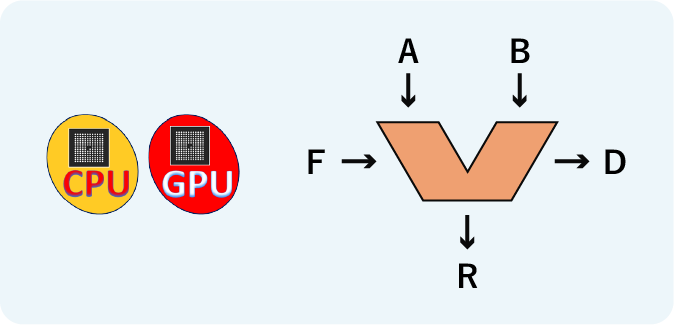
Data (information) detection operation
The best solution is a logical operator (Group Array Processor) that is specialized in the detection of data (information) and can execute massively parallel operations at a low cost.

Information processing today and in the near future
With the incoming big data society, the number of processes that include the detection of information, such as search, collation, recognition, and classification, increases every day.
There is no need to keep delegating processes to CPUs and GPUs that they struggle with.
Since Memorism Processors can take over a wide range of processes that CPUs and GPUs struggle with, the market for Memorism Processors is expected to become as large as that of conventional processors.
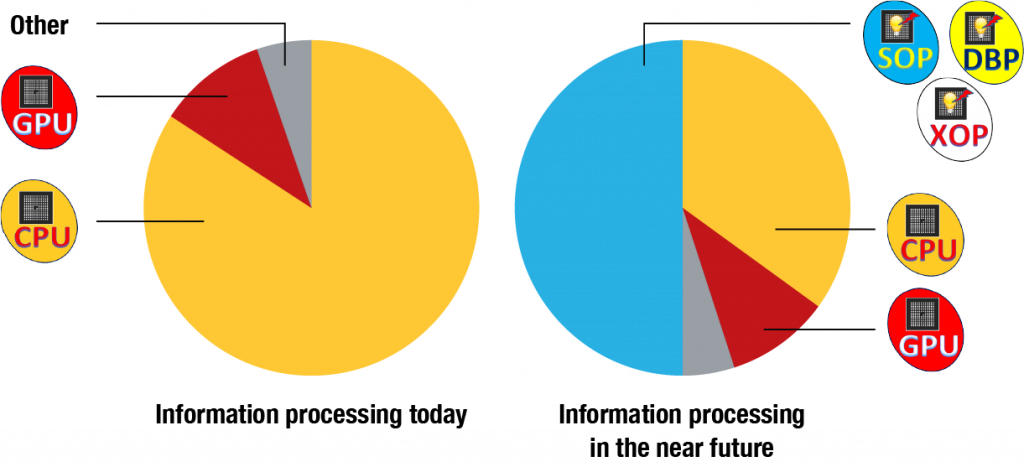
The level of contribution of Memorism
Memorism Processors can greatly contribute to a future in which all IT products evolve dramatically, and new values are created . We have listed concrete examples of items that Memorism Processors can contribute to and by how much.
Item examples
◎:Contributes greatly; ○:Contributes
| Items (examples) | Performance Accuracy improvement |
Ease of use Convenience |
Power-saving Miniaturization |
|---|---|---|---|
| Smartphones | ○ | ◎ | ○ |
| PCs and tablets | ○ | ◎ | ○ |
| Camera and video functions | ○ | ◎ | - |
| Servers | ◎ | - | ◎ |
| Surveillance cameras with recognition function | ◎ | ◎ | ○ |
| Medical image analysis systems | ◎ | ◎ | - |
| Cars (autonomous driving) | ◎ | ○ | ◎ |
| Drones (autonomous operation) | ◎ | ○ | ◎ |
| Robots (autonomous operation) | ◎ | ○ | ◎ |
| Web search systems | ◎ | ○ | ◎ |
| IoT, edge functions | ○ | ○ | ◎ |
| AI, software | ◎ | ◎ | - |
| Database, software | ◎ | ◎ | - |

